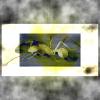So ... I had a small colony of ants who mysteriously slowly died off due to a string of either accidents or outright just dying for no apparent reason. They were also acting oddly, not grooming, not laying, not foraging. In a last ditch effort to save them, I moved them into a THA mini hearth. Where they died. A fungus that was breaking down dead fly corpses is now on the dead queen.
Now I have a mini hearth that I want to thoroughly clean and disinfect for obvious reasons.
Mack at THA has said some people have used vinegar, but vinegar by itself is not a great disinfectant. I have some craaaaaazy ideas for how to disinfect this thing, but I'm wondering if you guys have suggestions that have worked for you.

















